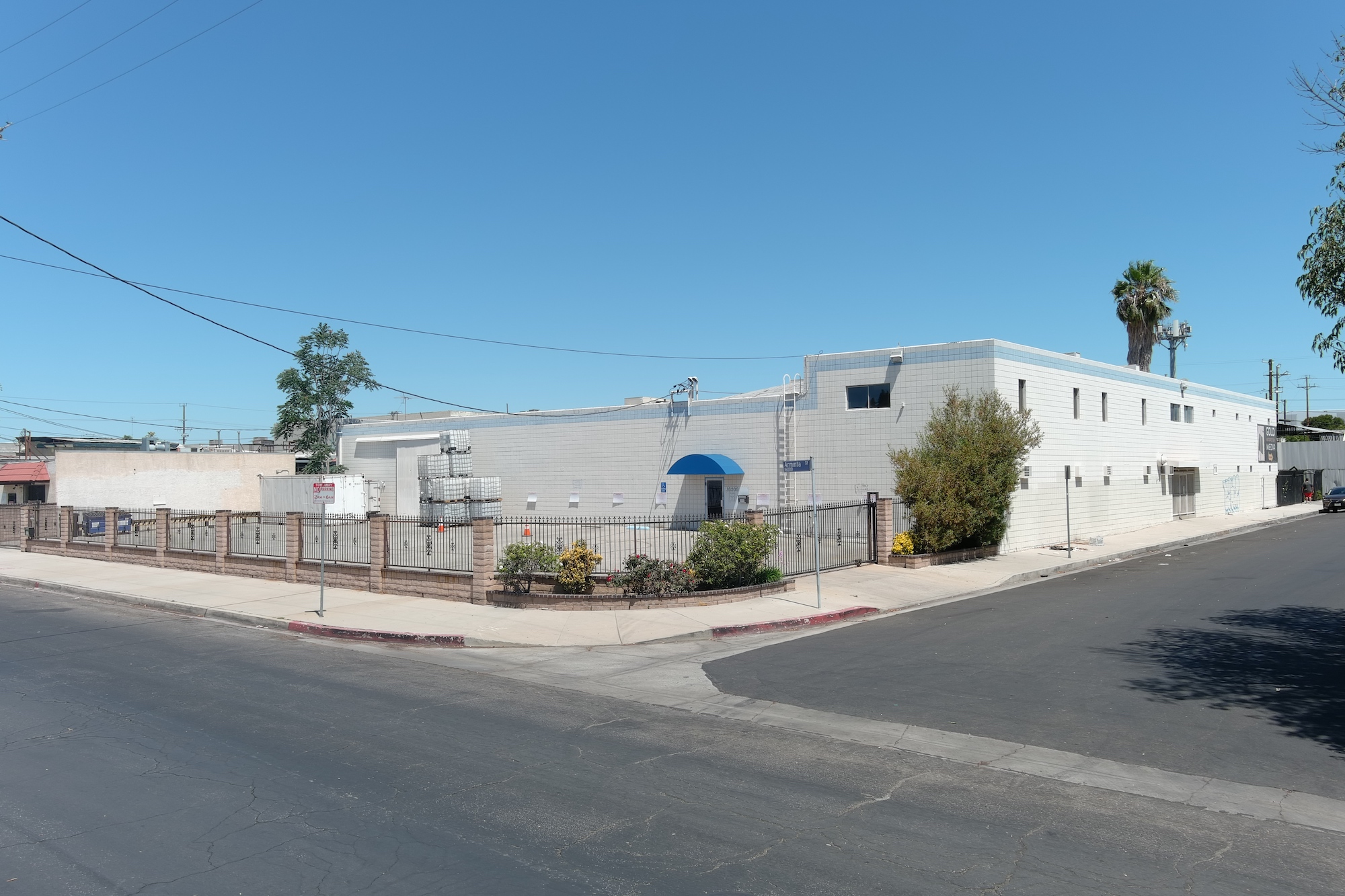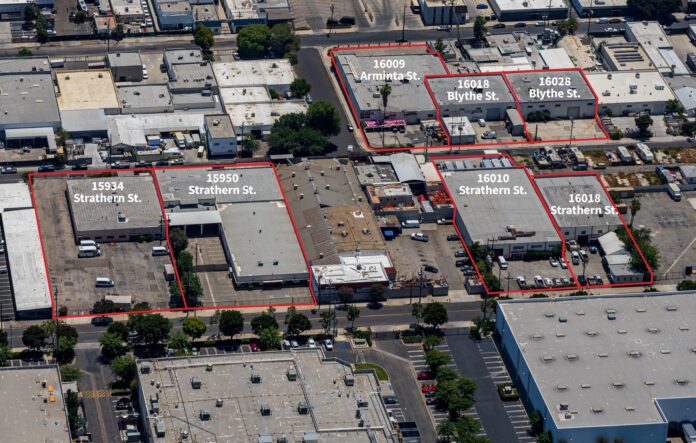Declining port volume, increasing interest rates, a move by some companies further inland and high lease rates have all put pressure on L.A.’s industrial market.
As of June 1, the vacancy rate in the market stood at 3.8%, up from 2.3% the previous year and 1.7% in 2021. It is the highest vacancy rate of any recent year, according to data from Avison Young Inc. The brokerage also found that leasing activity in the first few months of the year totaled nearly 8.5 million square feet, also far below recent years – for comparison, 2022 saw nearly 21 million square feet leased, while more than 34 million square feet of industrial product was leased the year before that.
A similar trend played out in the Valley. In June, the vacancy rate was 2.5%, up from 1.8% the previous year and 1.6% in 2021.
Steve Bohannon, an executive director at Cushman & Wakefield, called current sales and leasing “well off its pace.”
“Activity has slowed, and the sale market and investment arena has slowed down rather dramatically,” he said.
“It’s definitely not as robust as it was a year ago,” said Rob Antrobius, senior vice president and market officer in Los Angeles for Prologis. He oversees the company’s 40-million-square-foot Los Angeles and Orange County portfolio.
“Industrial outperformed the other asset classes and in a way benefited when we came out of Covid. E-commerce and other companies were looking to build up inventory and have it on hand, and it led to really positive industrial warehouse leasing,” he said. “The first half of the year we have seen healthy statistics in terms of occupancy, leasing, rent, but compared to last year it’s not as robust.”
He added that things were “normalizing” now.
George Stavaris, a managing director at Jones Lang LaSalle Inc. who specializes in industrial real estate in north Los Angeles and southern Ventura County, agreed, calling it a “return to normal. Covid and the Covid crunch hyperventilated the market.”
Leasing
Some tenants, experts said, are still simply renewing leases over concerns of having to find a new space in a tight market.
“What we’re finding interesting is that some renewal rates are trading higher than new lease rates simply because the business won’t pay or can’t risk trying to negotiate a renewal with the landlord, lose that renewal and be forced to pick up and move,” Stavaris said.
But others are looking to move, influenced by a slowdown at the ports and greater availability elsewhere.
The Port of Long Beach and Port of Los Angeles are among the busiest ports in the nation. In April, however, the port of Los Angeles processed 22% fewer twenty-foot equivalent units than the previous year. The Port of Long Beach, meanwhile, processed 20.1% fewer twenty-foot equivalent units than the previous year.
The ports have also seen issues as contract talks turned tense; workers have been without a contract since July 1 of last year.
Antrobius said that delays at the ports during Covid led some companies to increase the amount of product they have on site, and in some cases tenants are now finding themselves with too much space if they no longer are storing larger-than-usual amounts of inventory.
He said that while many customers want to have a presence in infill Los Angeles, some are “diversifying their supply chain routes for products through other ports.”
“Some tenants are saying, ‘OK, I can potentially continue to operate my business. I thought I needed to be in proximity to the ports, but I can move up to Central Valley or Las Vegas or Phoenix. I can continue to operate my business and pay the additional drayage expense and it still works for me because my rent costs are a third of what they were in L.A.,’” Ted Evans, director of asset management at Santa Monica-based industrial real estate developer and owner Dedeaux Properties, said.
Lease rates have still been strong this year. The asking rent for industrial properties so far this year is $1.87 a square foot on a triple-net basis, up from $1.73 the year prior and $1.22 the year before that, according to data from Avison Young.
In the San Fernando Valley, asking rents are $1.76 a square foot, up 10 cents from the previous year.
In the Inland Empire, rents are currently $1.25 on a triple-net basis, according to Avison Young. Rents are much lower in other markets, experts agree.
Jerry Holdner, a Southern California Region Lead for Avison Young, said he was seeing tenants migrate out of L.A. “if it makes sense, but it doesn’t for every company.”

Sublease space
Another complication is the amount of sublease space on the market. So far this year, roughly 6.6 million square feet of sublease space has become available, up nearly 70% from the total amount seen in the market last year, which was up nearly 64% from the year prior, according to data from Avison Young. In the San Fernando Valley, sublease space is up nearly 60% year over year.
Experts agree some of the sublease space on the market today is a result of companies taking more space than they needed during the pandemic and now giving some of that back to the market.
Holdner said there was enough sublease space on the market now to compete with direct rentals and expects it to “put upward pressure on the vacancy rate.”
When there is a large amount of sublease space on the market, it can affect rents and concessions offered by direct spaces, which are spaces leased directly by landlords.
Whether sublease space is in competition with these assets depends largely on the amount of space available to lease, but also how long is left on leases for the spaces.
Companies that need short-term overflow, especially if it will just be stacking goods on the floor, may find sublease space appealing. Tenants with complicated logistics operations, forklifts, rack storage, conveyer systems and more, however, often do not want to make the financial investment necessary to get their operations up and running for only a short time.
Stavaris called the amount of sublease space currently on the market “welcome because of how tight the market is … it’s much-needed availability in the market.”
The outlook
Experts and owners alike predict the rest of the year will be slow for both leasing and sales. Industrial sales took a nosedive this year as high interest rates and a lack of sellers made for a difficult market.
Bohannon expects the next 12 months to be “rather flat” as far as sales go. His business was previously 80% leasing and 20% sales, but has lately moved to 90% leasing and 10% sales.
Bohannon said there was not a lot of product on the market now, and many industrial investors are “on the sidelines waiting for better deals to come along.”
Holdner said that while there are some “aggressive” industrial owners out there, many “have put their pencils down.”
He expects things to pick up again next year.
Dedeaux’s Evans said his company was taking a cautious approach.
“We’re being more conservative in today’s environment to make sure we are executing and achieving the best results for us and our investors,” he said. “We have a strong belief in this market, in the greater Los Angeles market, and we think that there is continued value for investors looking to partake in industrial real estate.”
